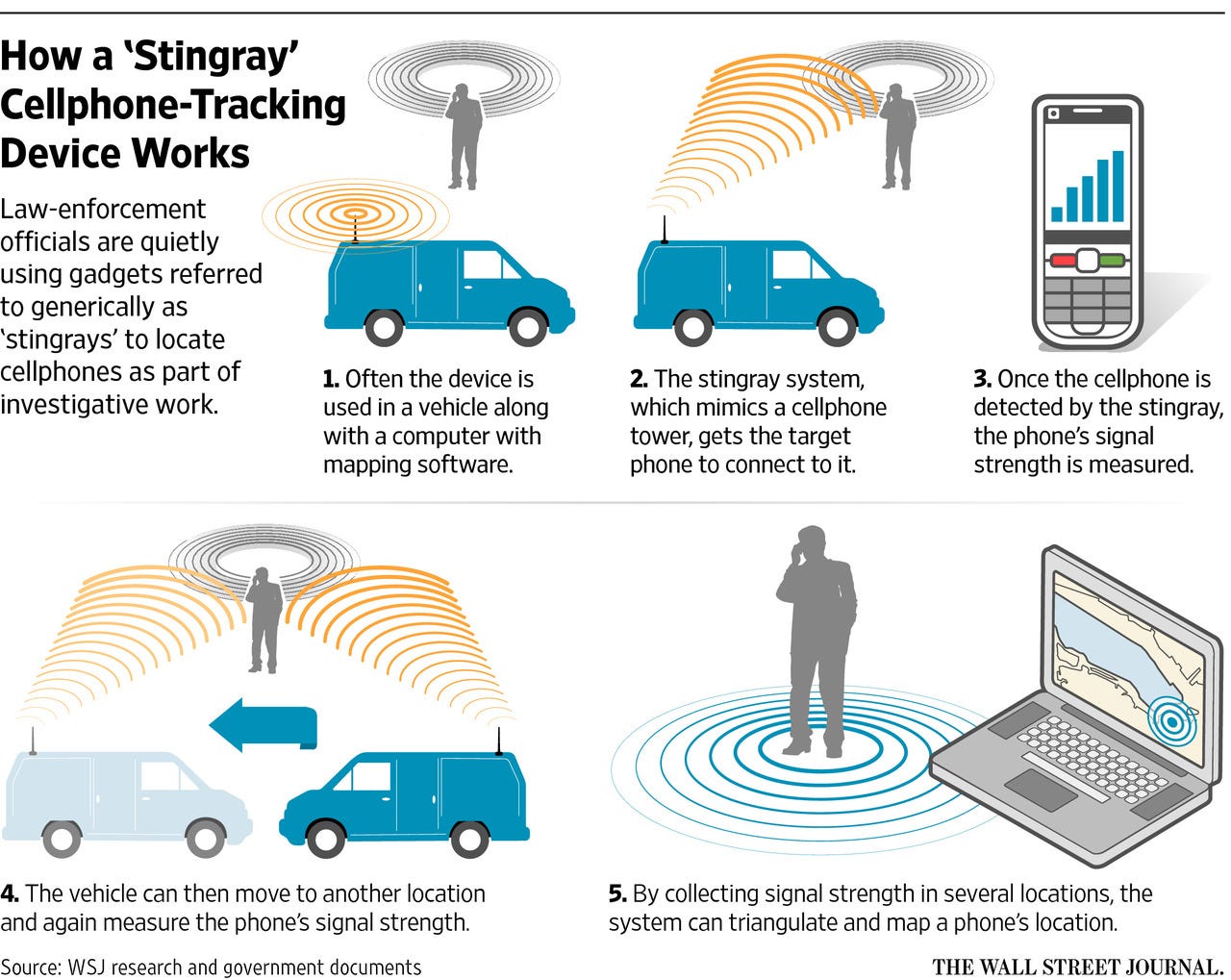Welcome to How to Resist, a newsletter that shares acts of nonviolent resistance, mutual aid, and community building for ordinary folks.
I hope this newsletter brings you new ideas and helps you find ways to engage that are right for you. If you like this content, act on it! Find something that speaks to you and take those first steps with confidence, knowing that you are part of a rising tide.
What you need to know
Police use a variety of surveillance techniques to collect information from protesters that can provide law enforcement with detailed information about protesters' identities, movements, and activities.
Police and law enforcement can:
Recognize your face: Cameras equipped with facial recognition software can identify individuals in a crowd by matching their faces to databases.
Intercept cell phone signals: Cell Site Simulators (Stingrays) mimic cell towers and intercept mobile phone signals, allowing police to collect phone numbers, locations, and other data from nearby devices.
‘Geofence’ an area: Geofencing involves creating a virtual boundary around a specific area. Police can then collect data from all devices that enter or leave this area.
Monitor social media: Law enforcement can monitor social media platforms to track protest activities, identify participants, and gather information on planned events.
Read your license plate: Automated License Plate Readers (ALPRs) can capture and record license plate numbers, allowing police to track the movements of vehicles associated with protesters.
Use drones and CCTV: Drones and closed-circuit television cameras can provide aerial and ground-level surveillance, capturing video footage of protests.
Buy information on you from Data Brokers: Police can purchase data from brokers who collect and sell information on individuals' online activities, purchases, and more.
Recognize your gait: Gait Recognition technology can identify individuals based on their walking patterns, even if their faces are obscured.
How to protect your privacy
Protecting your privacy during protests is crucial to ensure your safety and the safety of others. Here are some key steps you can take. Here are some tips from the ACLU, the Washington Post, and Fight for the Future:
Encrypt Your Phone: Make sure your phone's data is fully encrypted. For iPhones, this is automatic if you use a strong password. For Android phones, you can enable encryption in the security settings.
Disable Biometric Unlocks: Turn off Face ID and Touch ID. This prevents police from forcing you to unlock your device using your face or fingerprint.
Use Airplane Mode: Put your phone on airplane mode to prevent it from transmitting signals that could be used to track your location.
If you do message: Use an end-to-end encryption messaging tool like Signal app which will make it almost impossible for police to intercept and read your messages.
Wear a Mask and Sunglasses: This helps protect your identity from facial recognition technology.
Leave Your Car at Home: Police can use automated license plate readers to track vehicles. Walking or biking to the protest can help you avoid this.
Be Careful with Photos and Videos: Avoid posting identifiable images of other protesters online. Blur faces and unique identifiers before sharing.
Scrub Metadata from Photos: Metadata can reveal the time, location, and device used to take a photo. Transfer photos to your computer and take screenshots to remove this data before posting.
Back-Up Your Data: Regularly back up your phone's data in case it is confiscated or lost.
Learn more
Excellent video from the Washington Post, featuring Fight for the Future
How to Resist shares everyday acts of resistance, mutual aid, and community building rooted in progressive politics, the philosophy of nonviolence, and hope for a better future.
Want more? Check out the How to Resist archive!


